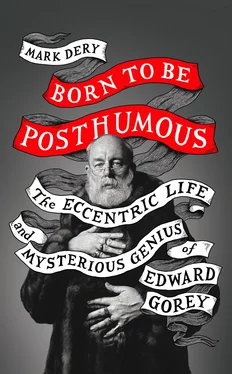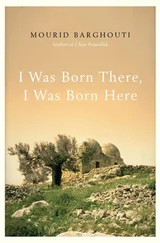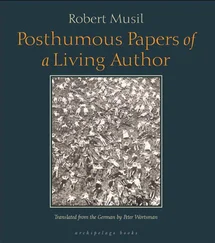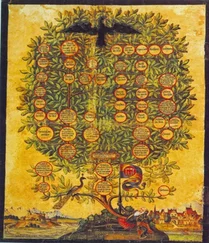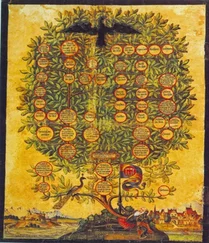So you’re teenage Ted Gorey, under the spell of the first artist you’ve ever known up close, a “wholeheartedly, authentically, continually subversive” bohemian (in Paul Richard’s words) with the untamed mustache to prove it. 54How do you put into practice his credo that an artist must be free, break the rules?
The answer, if you’re Gorey, is: by turning your back on the future and forging boldly into the past. At a moment when everyone’s talking about the Shock of the New, jolt them with the Shock of the Old: proclaim your love of silent film, insisting, “I really do believe that movies got worse once they started to talk.” 55Provoke the provocateurs by announcing that although you’re “perfectly willing to admit that Cézanne is a great, great painter … anybody who followed him is a lot of hogwash,” then watch jaws drop when you add, “And Picasso I detest more than I can tell you.” 56
While we’re on the subject of subversion, it’s fascinating to speculate about Gorey’s aesthetic as a witty riposte to another aspect of the town, and time, he grew up in: the “stormy, husky, brawling” manliness Carl Sandburg extolled in his poem “Chicago” (1914), a concept defined, in the City of the Big Shoulders, in corner-bar, working-class, Polish-Irish-Italian terms. 57Stanley Kowalski notions of masculinity, in the Midwest of the late ’30s and early ’40s, were more frankly homophobic than they are now, and an odd bird like Gorey would’ve found them oppressive.
Hackett, for instance, had no great love for gays; his plaid shirts, he-man mustache, and rough-and-ready aesthetic were a reaction, writes Patricia Albers, in Joan Mitchell: Lady Painter , “to the American stereotype of the artist as clubwoman’s lapdog.” 58In The Boardinghouse , a chronicle of life in a house full of Art Institute students den-mothered by Hackett, Donald S. Vogel recalls the time the art teacher was “really mad, shouting mad,” after catching a guy named Jules in flagrante with a male friend. 59“Hackett’s roar was heard throughout the house,” and by day’s end Jules’s room was for rent.
What did Hackett make of Gorey? No one from his Parker days remembers Ted being anywhere near as flamboyant as he would later become, at Harvard. He wasn’t openly regarded as gay by the Parker community, and whether he was or wasn’t, says Robert McCormick Adams, who was a year behind him at Parker, was “insignificant in comparison to the fact that we were looking at a different aesthetic.”
Still, it’s hard to imagine that Hackett wouldn’t have picked up on the cultural subtext of Gorey’s emerging aesthetic, which Adams characterizes as “implicitly homosexual … concentrating on matters of style and presentation, and literature that was not common in our parents’ homes at that time.” As for Gorey, what would he have made of Hackett’s boho macho? Would he have pushed back against it, following his teacher’s admonition to reject received truths? Maybe that’s the impulse behind Gorey’s earliest recorded act of eccentricity: sometime during his Parker years, he painted his toenails green and went for a walk, barefoot, down Michigan Avenue. 60
At Parker, Gorey’s dawning awareness that his knack for drawing just might lead to something, maybe even a career, kept pace with his deepening interest in art. He soon fell in with the art clique: Joan Mitchell, who would go on to international fame as an abstract expressionist painter; Mitchell’s close friend Lucia Hathaway; and Connie Joerns, all of whom were smitten, to varying degrees, with the Hackett mystique. “There were four of us … whom [Hackett] inspired, and who existed as a group in the art studio,” remembered Joerns. (A close friend of Gorey’s for life, she would work alongside him in the art department at Doubleday and, like Ted, pursue a career as a freelance illustrator, authoring several children’s books along the way.) “We referred to him as ‘Mr. H’ and the four of us quite frankly adored him.” 61
Fiercely intelligent and inimitably idiosyncratic, Gorey and Mitchell were drawn to each other; they “frequently ‘did stuff’ together,” writes Albers, sowing the seeds of a casual friendship that was rekindled after Parker whenever both were back in town for the holidays. 62Unsurprisingly, their pointed opinions and what was very likely a repressed rivalry gave their friendship “a mutually undercutting edge,” Albers notes. Ted “was intrigued by Joan,” recalled Joerns, but “thought her paintings were absolute garbage,” an appraisal that remained unaltered over the years, despite Mitchell’s ascent to art-world stardom. 63According to Mitchell’s first husband, Barney Rosset, who was two years ahead of Joan and Ted at Parker, the feeling was entirely mutual. “He wouldn’t have even been an artist to her,” said Rosset. (Rosset was another Parkerite who rattled the bourgeois complacency of postwar America: as head of Grove Press, he carried the battle standard for free speech, winning legal campaigns to publish such “pornographic” novels as Henry Miller’s Tropic of Cancer and William S. Burroughs’s Naked Lunch .)
When he wasn’t hanging out with the art pack, Gorey was studying art or making it, more often than not. Lloyd Lewis, sports editor for the Chicago Daily News , published one of Ted’s cartoons in his May 22, 1939, Voice from the Grandstand column, a weekly collection of sports-related cornpone.
More interesting than Gorey’s cartooning—single-panel gags drawn in a style reminiscent of Chic Young’s Blondie —is his pen name. (“I wanted to publish everything under a pseudonym from the very beginning,” he told an interviewer in 1977, “but everybody said, ‘What for?’ And I couldn’t really explain why I wanted to. I still don’t know exactly, except that I think what you publish and who you are are two different things. I don’t really see that much connection.”) 64All but a few of Gorey’s thirty-one noms de plume—memorialized on the dedication page of his last, posthumously published collection, Amphigorey Again —are anagrams of “Edward Gorey,” but this, his first, is not: Sin-jun is a phonetic rendering of the British pronunciation of Gorey’s middle name, St. John—and a premonition of the Anglophilia that suffused much of his later work.
There’s a gag-book facility to Gorey’s stuff at this point, but if we look past the generic single-panel-cartoon style, we can see hints of originality. He’s got an illustrator’s knack for storytelling and a cartoonist’s gift for visual humor. Consider the wall-size mural he painted for a dance celebrating Parker’s athletic victories.
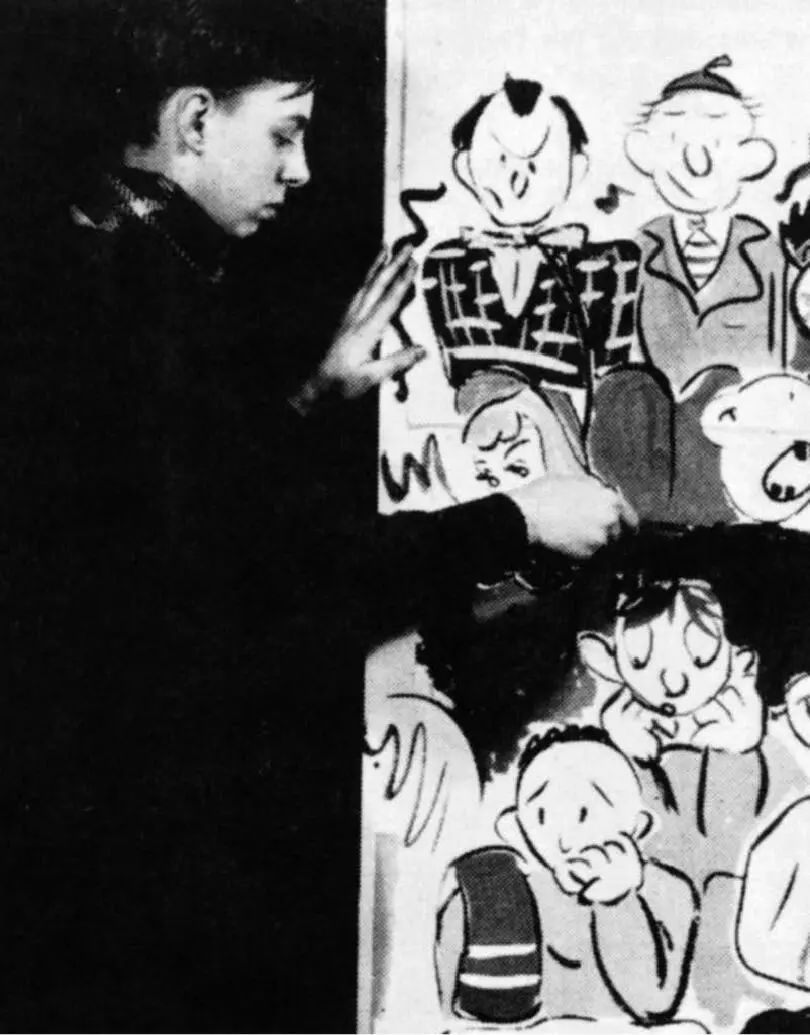
Gorey at work on a mural for a high-school social event, Parker Record yearbook (1942). (Francis W. Parker School, Chicago)
Described by the January 22, 1940, Parker Weekly as “a combination of Diego Rivero [sic], Salvadore [sic] Dali, and Botticelli,” it depicted “the audience as a player views it after just having missed the basket.” 65Just look at that poor sap pulling his fedora down over his ears to drown out the guy nearby, snoring away, and the goofball in the front row, sipping two Cokes at once, a straw in each corner of his mouth. Already Gorey is attentive to the signals our clothes send about who we are: the Coke guzzler is wearing appropriately nutty trousers, loud slacks crawling with serpentine squiggles.
Intriguingly, Gorey’s women—for example, the two cheerleaders sitting, knees bent at the same coquettish angle—are characterless mannequins, the same pert pinup babes that, right about then, were flaunting their painted curves in tattoos or on fighter planes. Betty Grable–esque cuties with upthrusting busts, they’re jarringly unlike the women in his little books, tightly corseted Victorians or monobosomed Edwardians or Jazz Age flappers with boyish figures.
Читать дальше
